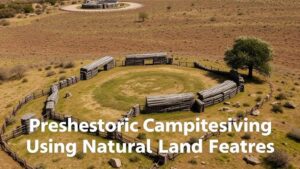Exploring Abandoned Shell Middens for Tools and Jewelry Fragments
Exploring Abandoned Shell Middens for Tools and Jewelry Fragments
Shell middens are archaeological deposits formed by the accumulation of shells from seafood consumption. Also to shells, these middens often contain tools, jewelry fragments, and other material culture artifacts that provide invaluable insights into the lives of ancient coastal communities. This article aims to delve into the significance of shell middens, the types of artifacts they yield, and the methodologies employed in their exploration.
The Importance of Shell Middens
Shell middens serve as vital archaeological records that illustrate dietary practices, societal structures, and trade relationships of past cultures. For example, the Coast Salish peoples of the Pacific Northwest left behind extensive shell middens that reflect their reliance on marine resources. These deposits are often found at coastal sites and embody centuries of human activity, enabling researchers to reconstruct historical ecosystems and understand human interactions with nature.
Contents of Shell Middens
Abandoned shell middens can yield a variety of artifacts, including:
- Tools: Stone and bone tools used for fishing, processing food, and crafting.
- Jewelry Fragments: Ornaments made from marine materials such as shell and coral, which offer insights into cultural aesthetics.
- Faunal Remains: Bones of different species that indicate dietary habits and procurement strategies.
An example of such findings is the excavation of a shell midden at the site of Santa Cruz Island in California, where archaeologists uncovered a trove of obsidian tools alongside shell fragments, demonstrating sophistication in material culture.
Methodologies for Exploration
Exploration of shell middens typically involves a multi-faceted archaeological approach, often incorporating both fieldwork and laboratory analysis. Key methodologies include:
- Excavation Techniques: Systematic digging often employed using stratigraphic methods to document contextual relationships.
- Screening: Fine sifting of soil to recover smaller artifacts that may otherwise be overlooked.
- Dating Methods: Radiocarbon dating and other chronological techniques to ascertain the age of the deposits.
In the case of the Shell Mound of the San Francisco Bay Area, archaeologists utilized both excavation and carbon dating to reveal a timeline dating back over 5,000 years, shedding light on long-term human-environment interactions.
Challenges in the Study of Shell Middens
Despite their importance, there are several challenges associated with studying shell middens. e include:
- Environmental Degradation: Coastal erosion and climate change threaten the integrity of these archaeological sites.
- Site Disturbance: Modern construction and human activities can lead to the destruction of valuable cultural resources.
- Legal and Ethical Considerations: The repatriation of artifacts and respect for indigenous rights must be navigated carefully.
For example, in the Fishers Island shell midden, increasing storm intensity has caused significant loss of archaeological material, complicating preservation efforts.
Real-World Applications
The study of shell middens has direct applications in various fields beyond archaeology. Urban planners can utilize insights from these studies to develop sustainable coastal management practices. Plus, findings from shell middens can contribute to environmental restoration efforts, particularly in assessing historical biodiversity and community resilience.
In the context of education, shell middens offer rich material for engaging students in interdisciplinary learning, linking archaeology, geology, anthropology, and environmental science.
Actionable Takeaways
For researchers and enthusiasts interested in exploring shell middens, consider the following approaches:
- Conduct field surveys in collaboration with local archaeological societies to understand and preserve site integrity.
- Engage with indigenous communities to gain insights and foster respectful relationships regarding heritage studies.
- Use technological advancements, such as GIS and remote sensing, for mapping and analysis of middens.
To wrap up, exploring abandoned shell middens for tools and jewelry fragments not only enhances our understanding of ancient cultures but also encourages a broader dialogue on preservation and sustainability in relation to historical ecological practices.


